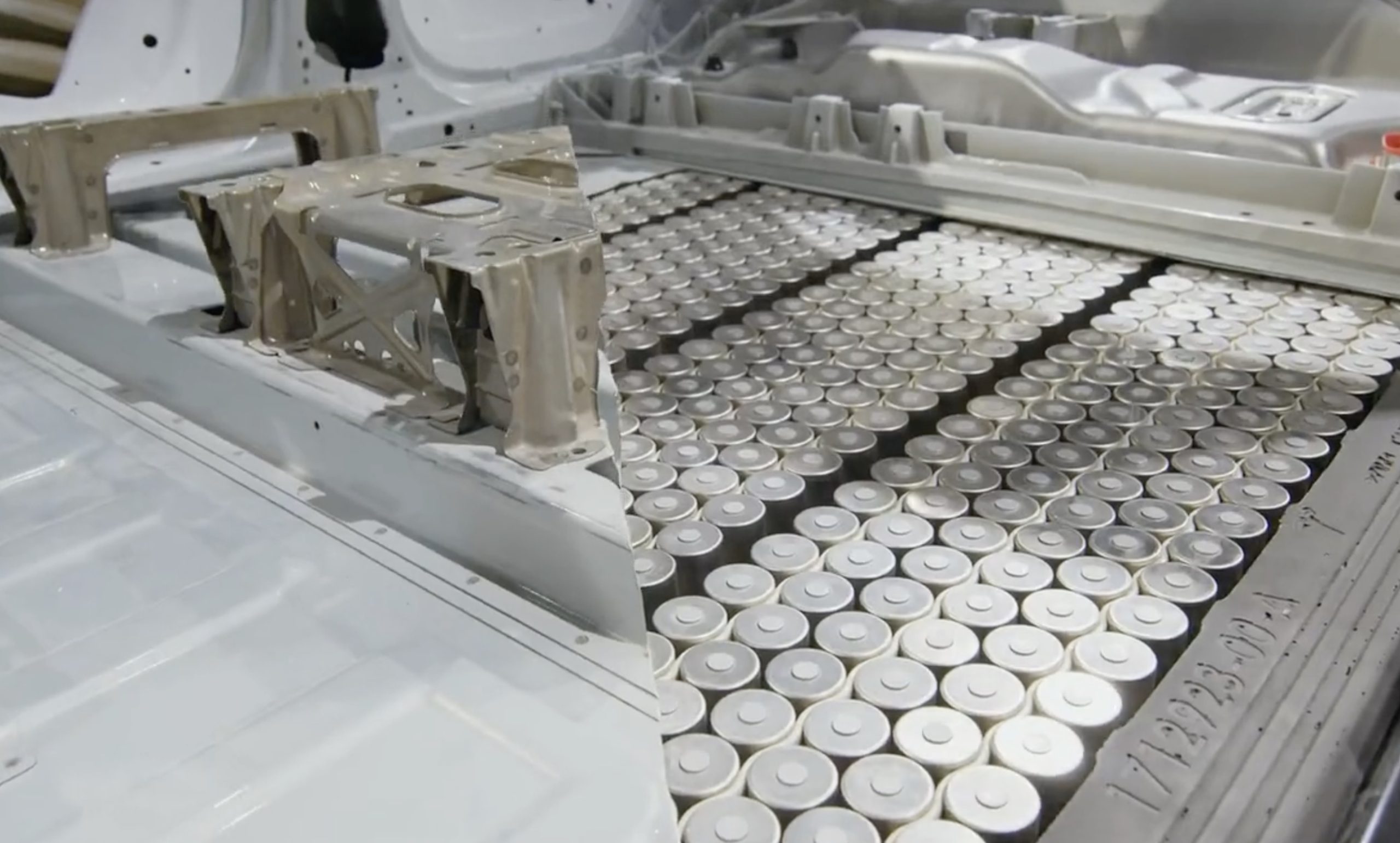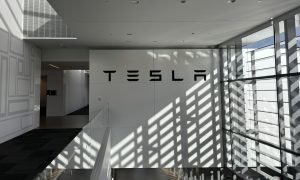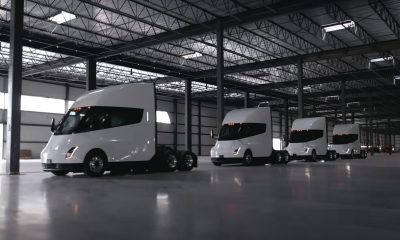

News
Tesla supplier sheds light on graphite supply challenge for EV battery manufacturers [Editorial]
Graphite is an essential part of a lithium-ion battery. There are many challenges that EV battery manufacturers might face in the graphite market as electric vehicle demand continues to rise.
Graphite is often an overlooked essential mineral when people think of EV batteries. However, it is a crucial component in the anodes of lithium-ion batteries used in electric vehicles.
Graphite and Transparency
The chief executive of Syrah Resources, Shaun Verner, shared a bit about graphite pricing and funding for new projects. Syrah Resources is an Australian company that supplies Tesla from its mine in Mozambique, one of the largest graphite producers.
Verner commented that the graphite market lacks transparency when it comes to pricing, leading bankers to hesitate when it comes to funding new graphite-related projects.
Only a handful of countries mine graphite and even fewer refine the mineral enough to be used in batteries and other products. With few producers in the graphite industry, graphite consumers enter into long-term bilateral supply agreements with little transparency on prices. In addition, relatively few analysts follow the graphite industry, making it difficult to get any long-term forecasts on graphite prices.
“The single biggest impediment to new investment is the opaque nature of the market because to get the commercial debt in place is really challenging,” said Verner.
Graphite Supply
Graphite prices have declined in recent months compared to the highs in early 2022. Fastmarkets reported that traditional graphite applications have decreased this year, resulting in “sluggish” conditions in the market. However, graphite demand is expected to rise in the next few years due to growth in the electric vehicle sector.
“Graphite has kind of been the poor cousin of the battery minerals and doesn’t get the attention of the other commodities,” commented Gregory Bowes, executive chairman of the Northern Graphite Corporation. “But we’re getting very close to an inflection point where demand overtakes supply and this is going to be first page news.”
Experts observing the graphite market expect graphite supply to hit a deficit as EV battery makers increase production. Fastmarkets estimates that natural graphite consumption would rise 40% year on year, on par with the EV sector. Benchmark Mineral Intelligence had the same forecast and calculated that graphite supply would hit a deficit of 20,000 tons in 2022.
China’s dominance in the graphite industry factors into the forecasted deficit since it dominates the graphite market. In 2021, China produced 820,000 metric tons (MT) of graphite, a significant increase compared to the previous two years. The US Geological Survey reported that China accounted for 79% of the world’s graphite mining last year. The country’s quick recovery from COVID-19 shutdowns contributed to its dominance in 2021.
“Chinese producers quickly increased production after a few months of closures in 2020. This allowed China to gain a more dominant position in the market for 2021 and slowed down the diversification of the supply chain,” noted the US Geological Survey’s report.
After China, Brazil and Mozambique are the next largest graphite producers. Brazil produced 68,000 MT last year, while Mozambique’s output was 30,000 MT. Russia, Madagascar, Ukraine, Norway, Canada, India, and Sri Lanka make up the remaining Top 10 countries that produce graphite.
Graphite and the Inflation Reduction Act
The graphite industry might be a major challenge for automakers seeking to launch their products in the United States over the next few years. The recently passed Inflation Reduction Act included EV tax credits that could go as high as $7,500 for automakers that adhere to a few specific requirements.
One of the requirements to qualify for the EV tax credit is related to batteries and the minerals used to make them. According to the Inflation Reduction Act, at least 40% of the critical minerals used to make US-made EV batteries must also come from US miners or recycling plants. Automakers can also qualify for the tax credit if the minerals used in their US-made batteries come from countries with free trade deals with the United States.
In 2021, natural graphite was not produced in the United States, but it consumed 45,000 tons of the mineral, estimated to be worth $41 million. The United States imported about 53,000 tons of graphite last year, mainly from China. It also imported graphite from Mexico, Canada, India, and other sources.
US Geological Survey mentioned one US automaker in its report about graphite imports. It did not mention the automaker by name.
“A US automaker continued building a large plant to manufacture lithium-ion electric vehicle batteries. The completed portion of the plant was operational, and it produced battery cells, battery packs, drive units, and energy storage products. At full capacity, the plant was expected to require 35,200 tons per year of spherical graphite for use as anode material for lithium-ion batteries,” stated the report.
Eric Desaulniers, the chief executive of Nouveau Monde Graphite, stated that discussions with cell manufacturers have ramped up after the Inflation Reduction Act was passed. Nouveau Monde is currently developing a graphite mine and battery-grade anode plant in Canada.
Desaulniers noted that challenges are ahead when it comes to securing project financing since “cell makers are cash-constrained.” He also noted that automakers had their hands full from scaling up their respective battery manufacturing facilities.
Tesla, considered the lead electric vehicle manufacturer in the United States, is already producing its 4680 battery cells in California. Rivian, General Motors, and other automakers also plan to develop their own battery cells in their own battery manufacturing plants.
The Teslarati team would appreciate hearing from you. If you have any tips, contact me at maria@teslarati.com or via Twitter @Writer_01001101.
News
Tesla begins Robotaxi certification push in Arizona: report
Tesla seems serious about expanding its Robotaxi service to several states in the coming months.

Tesla has initiated discussions with Arizona transportation regulators to certify its driverless Robotaxi service in the state, as per a recent report from Bloomberg News. The move follows Tesla’s launch of its Robotaxi pilot program in Austin, Texas, as well as CEO Elon Musk’s recent comments about the service’s expansion in the Bay Area.
The Arizona Department of Transportation confirmed to Bloomberg that Tesla has reached out to begin the certification process for autonomous ride-sharing operations in the state. While details remain limited, the outreach suggests that Tesla is serious about expanding its driverless Robotaxi service to several territories in the coming months.
The Arizona development comes as Tesla prepares to expand its service area in Austin this weekend, as per CEO Elon Musk in a post on X. Musk also stated that Tesla is targeting the San Francisco Bay Area as its next major market, with a potential launch “in a month or two,” pending regulatory approvals.
Tesla first launched its autonomous ride-hailing program on June 22 in Austin with a small fleet of Model Y vehicles, accompanied by a Tesla employee in the passenger seat to monitor safety. While still classified as a test, Musk has said the program will expand to about 1,000 vehicles in the coming months. Tesla will later upgrade its Robotaxi fleet with the Cyercab, a two-seater that is designed without a steering wheel.
Sightings of Cybercab castings around the Giga Texas complex suggests that Tesla may be ramping the initial trial production of the self-driving two-seater. Tesla, for its part, has noted in the past that volume production of the Cybercab is expected to start sometime next year.
In California, Tesla has already applied for a transportation charter-party carrier permit from the state’s Public Utilities Commission. The company is reportedly taking a phased approach to operating in California, with the Robotaxi service starting with pre-arranged rides for employees in vehicles with safety drivers.
News
Tesla sets November 6 date for 2025 Annual Shareholder Meeting
The automaker announced the date on Thursday in a Form 8-K.

Tesla has scheduled its 2025 annual shareholder meeting for November 6, addressing investor concerns that the company was nearing a legal deadline to hold the event.
The automaker announced the date on Thursday in a Form 8-K submitted to the United States Securities and Exchange Commission (SEC). The company also listed a new proposal submission deadline of July 31 for items to be included in the proxy statement.
Tesla’s announcement followed calls from a group of 27 shareholders, including the leaders of large public pension funds, which urged Tesla’s board to formally set the meeting date, as noted in a report from The Wall Street Journal.
The group noted that under Texas law, where Tesla is now incorporated, companies must hold annual meetings within 13 months of the last one if requested by shareholders. Tesla’s previous annual shareholder meeting was held on June 13, 2024, which placed the July 13 deadline in focus.
Tesla originally stated in its 2024 annual report that it would file its proxy statement by the end of April. However, an amended filing on April 30 indicated that the Board of Directors had not yet finalized a meeting date, at least at the time.
The April filing also confirmed that Tesla’s board had formed a special committee to evaluate certain matters related to CEO Elon Musk’s compensation plan. Musk’s CEO performance award remains at the center of a lengthy legal dispute in Delaware, Tesla’s former state of incorporation.
Due to the aftermath of Musk’s legal dispute about his compensation plan in Delaware, he has not been paid for his work at Tesla for several years. Musk, for his part, has noted that he is more concerned about his voting stake in Tesla than his actual salary.
At last year’s annual meeting, TSLA shareholders voted to reapprove Elon Musk’s compensation plan and ratified Tesla’s decision to relocate its legal domicile from Delaware to Texas.
Elon Musk
Grok coming to Tesla vehicles next week “at the latest:” Elon Musk
Grok’s rollout to Tesla vehicles is expected to begin next week at the latest.

Elon Musk announced on Thursday that Grok, the large language model developed by his startup xAI, will soon be available in Tesla vehicles. Grok’s rollout to Tesla vehicles is expected to begin next week at the latest, further deepening the ties between the two Elon Musk-led companies.
Tesla–xAI synergy
Musk confirmed the news on X shortly after livestreaming the release of Grok 4, xAI’s latest large language model. “Grok is coming to Tesla vehicles very soon. Next week at the latest,” Musk wrote in a post on social media platform X.
During the livestream, Musk and several members of the xAI team highlighted several upgrades to Grok 4’s voice capabilities and performance metrics, positioning the LLM as competitive with top-tier models from OpenAI and Google.
The in-vehicle integration of Grok marks a new chapter in Tesla’s AI development. While Tesla has long relied on in-house systems for autonomous driving and energy optimization, Grok’s integration would introduce conversational AI directly into its vehicles’ user experience. This integration could potentially improve customer interaction inside Tesla vehicles.
xAI and Tesla’s collaborative footprint
Grok’s upcoming rollout to Tesla vehicles adds to a growing business relationship between Tesla and xAI. Earlier this year, Tesla disclosed that it generated $198.3 million in revenue from commercial, consulting, and support agreements with xAI, as noted in a report from Bloomberg News. A large portion of that amount, however, came from the sale of Megapack energy storage systems to the artificial intelligence startup.
In July 2023, Musk polled X users about whether Tesla should invest $5 billion in xAI. While no formal investment has been made so far, 68% of poll participants voted yes, and Musk has since stated that the idea would be discussed with Tesla’s board.
-

 Elon Musk1 week ago
Elon Musk1 week agoTesla investors will be shocked by Jim Cramer’s latest assessment
-

 Elon Musk3 days ago
Elon Musk3 days agoElon Musk confirms Grok 4 launch on July 9 with livestream event
-

 Elon Musk16 hours ago
Elon Musk16 hours agoxAI launches Grok 4 with new $300/month SuperGrok Heavy subscription
-

 News7 days ago
News7 days agoTesla Model 3 ranks as the safest new car in Europe for 2025, per Euro NCAP tests
-

 Elon Musk2 weeks ago
Elon Musk2 weeks agoA Tesla just delivered itself to a customer autonomously, Elon Musk confirms
-

 Elon Musk1 week ago
Elon Musk1 week agoxAI’s Memphis data center receives air permit despite community criticism
-

 Elon Musk2 weeks ago
Elon Musk2 weeks agoTesla’s Omead Afshar, known as Elon Musk’s right-hand man, leaves company: reports
-

 News2 weeks ago
News2 weeks agoXiaomi CEO congratulates Tesla on first FSD delivery: “We have to continue learning!”
















